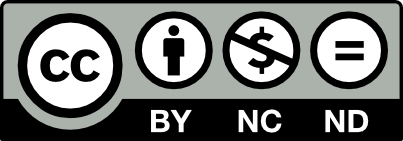This page is licensed under Creative Commons under Attribution 4.0 International. Anyone can share content from this page, with attribution and link to College MatchPoint requested.
From Safety to Selective: Why Public Flagship Universities Are No Longer a Sure Thing
For years, many families considered public flagship universities to be smart safety choices—academically rigorous, nationally respected, and relatively attainable. Schools like the University of Georgia, University of Michigan, and UNC-Chapel Hill offered big-school energy with strong outcomes and, for high-achieving students, a sense of security in the admissions process.
That’s no longer the case.
The Class of 2025 admissions cycle confirmed what many parents of teenagers are just beginning to realize: many flagship public universities are now among the most selective options on a student’s list—especially for out-of-state applicants.
In this post, we’ll unpack why this shift is happening, what the latest admissions data reveals, and how families can build smarter, more strategic college lists that balance aspiration with access.
The Numbers Tell the Story
Public flagships now have admit rates that rival (and in some cases, exceed) those of elite private colleges. Here’s what this year looked like:
- University of Michigan
- Overall admit rate: 17%
- Out-of-state admit rate: closer to 12%
- UNC-Chapel Hill
- Out-of-state admit rate: under 15%
- North Carolina state law caps non-resident enrollment at 18%
- University of Georgia
- Overall admit rate: 33%, down from 46% five years ago
- Applications have risen by 67% since 2020
- University of Florida
- Overall admit rate: below 40%
- Out-of-state applicants face rising competition and increased selectivity
For high-achieving students with 4.0+ GPAs, strong test scores, and leadership roles, these schools once felt like “matches” or “likelies.” But with application volume surging and out-of-state spots shrinking, these flagship universities must now be considered reach schools for many applicants—especially those applying from outside the home state.
What’s Driving the Shift?
1. Application Inflation
The Class of 2025 submitted over 8 million Common App applications—a 6% increase from last year. Students are applying to more schools, including flagships with national reputations, creating intense bottlenecks in the process.
2. National Brand Recognition
Public universities have expanded their visibility through athletics, research, honors programs, and targeted marketing. Many now attract top students from all 50 states—often outpacing regional private schools in prestige and affordability.
3. Out-of-State Demand + In-State Quotas
Flagships prioritize in-state students to protect taxpayer-funded access. In states like North Carolina and California, legal caps restrict non-resident enrollment—making the pool of available seats for out-of-state students incredibly limited and highly competitive.
4. Yield Management Strategies
Admissions offices now use sophisticated modeling to admit students most likely to enroll. Out-of-state students without demonstrated interest—through visits, supplemental essays, or geographic ties—may be deprioritized, even if academically qualified.
What This Means for Out-of-State Families
It’s time to rethink how public universities fit into the admissions strategy. If your student is applying to out-of-state flagships, it’s essential to understand that these are not “safe” options—they’re selective, high-stakes choices that require intentional preparation.
But that doesn’t mean students have to give up on the idea of attending a large, dynamic, academically rigorous public institution. The key is to build a balanced list that includes equally strong—but more accessible—alternatives.
High-Quality Public Options with More Predictable Outcomes
These nationally respected public universities still offer strong academics and big-school experiences, but with less pressure and more favorable admit rates—especially for out-of-state students:
- University of Minnesota – Twin Cities
- Top-tier programs in engineering, business, and health sciences
- Admit rate ~70%; part of the Big Ten
- University of Pittsburgh
- Strong in pre-med, research, and health sciences
- Urban campus with major hospital affiliations
- Admit rate ~49%
- Indiana University – Bloomington
- Home to the Kelley School of Business and strong liberal arts programs
- Out-of-state admit rate ~85%; business admissions more selective
- University of Iowa
- Known for writing, health, and communications programs
- Honors college and generous merit aid
- University of Colorado – Boulder
- Popular for environmental science, aerospace, and business
- Admit rate ~79%, though rising
- Michigan State University
- Strong outcomes across STEM, business, and communications
- A more accessible alternative to U-M
These schools offer:
- Academic excellence
- National name recognition
- Supportive student communities
- Strong alumni networks
- Opportunities for merit scholarships
What Parents Can Do Now
✅ Reassess the College List
Make sure your student’s list includes a mix of true match and likely schools they’d be excited to attend—not just aspirational brand names.
✅ Focus on Fit Over Prestige
A college that aligns with your teen’s academic interests, social style, and support needs will lead to stronger engagement—and better outcomes—than one that simply looks good on a bumper sticker.
✅ Understand Residency Policies
If your student is applying out-of-state, check for reciprocity agreements or tuition discounts through programs like the WUE or Midwest Student Exchange.
✅ Demonstrate Interest Early
Campus visits, virtual info sessions, and strong supplemental essays signal intent to enroll—something admissions offices value more than ever.
Redefining “Safety”
The term “safety school” needs a rebrand. In today’s landscape, there are no guarantees—especially at public flagships. The most strategic families are those who build data-informed, well-rounded college lists that reflect the evolving admissions realities.
If your teen dreams of attending a public flagship, support that dream—but treat it with the same strategy and intention you would a highly selective private school. And make sure they also apply to schools that are academically aligned, more accessible, and just as likely to help them thrive.
Because a smart application strategy isn’t about playing it safe—it’s about expanding the definition of success.


